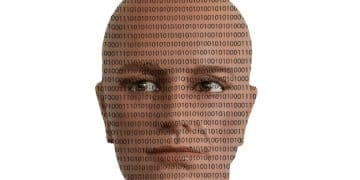AI Bias in Social Justice: Ethical Implications for 2025

Exploring the ethical implications of AI bias in social justice in 2025 reveals critical challenges as algorithms increasingly influence decisions, potentially exacerbating inequalities and requiring proactive measures to ensure fairness and accountability.
As we approach 2025, the pervasive integration of artificial intelligence into various aspects of social justice necessitates a critical examination of its ethical implications. This article focuses on exploring the ethical implications of AI bias in social justice: a 2025 perspective, highlighting the challenges and potential solutions for ensuring fairness and equity in an increasingly AI-driven world.
Understanding AI Bias: A 2025 Overview
In 2025, understanding what constitutes AI bias is more crucial than ever. AI systems, while seemingly objective, are trained on data that often reflects existing societal biases, leading to prejudiced outcomes.
Sources of AI Bias
AI bias arises from several key sources, each contributing to the skewed outcomes observed in various applications.
- Data Bias: AI models are trained on datasets, and if these datasets reflect historical or societal biases, the AI will learn and perpetuate these biases.
- Algorithmic Bias: The design of the algorithms themselves can introduce bias. For instance, if an algorithm prioritizes certain features over others, it can lead to discriminatory results.
- Human Bias: The humans who develop and deploy AI systems carry their own biases, which can inadvertently be embedded into the AI. This can happen during data collection, feature selection, or model evaluation.
Therefore, recognizing these sources of bias is the first step toward mitigating their impact. In 2025, robust strategies for identifying and correcting bias in AI systems are critically important.

The Impact of AI Bias on Criminal Justice
The criminal justice system is one area where AI bias is particularly concerning. Algorithms are being used to predict recidivism, determine bail amounts, and even assist in sentencing decisions.
These AI-driven tools aim to improve efficiency and reduce human error, but they can also perpetuate and amplify existing racial and socioeconomic disparities.
Case Studies: Criminal Justice in 2025
Several real-world cases highlight the potential dangers. For instance, predictive policing algorithms have been shown to disproportionately target minority communities, leading to increased surveillance and arrests in these areas.
- COMPAS (Correctional Offender Management Profiling for Alternative Sanctions): This algorithm, used to assess the risk of recidivism, has been found to be biased against African Americans.
- Predictive Policing Algorithms: These tools often rely on historical crime data, which may reflect biased policing practices, leading to a feedback loop of increased surveillance in minority neighborhoods.
- Facial Recognition Technology: Studies have shown that facial recognition systems are less accurate when identifying individuals with darker skin tones, increasing the risk of misidentification and wrongful arrests.
To address these issues, it is essential to implement rigorous testing and validation of AI systems used in criminal justice, ensuring they do not discriminate against any particular group.
AI Bias in Healthcare: Ethical Considerations
In healthcare, AI is being used for diagnosis, treatment planning, and personalized medicine. While these applications hold great promise, they also raise significant ethical concerns related to bias.
If AI systems are trained on biased healthcare data, they may provide inaccurate or discriminatory recommendations, exacerbating health disparities.

Ensuring Fairness in AI-Driven Healthcare
To ensure fairness in AI-driven healthcare, several strategies must be implemented.
Firstly, attention should be given to the composition of training data, ensuring it reflects the diversity of the population being served. Secondly, algorithms should be regularly audited to identify and correct biases.
Furthermore, healthcare professionals need to be trained to critically evaluate AI recommendations, recognizing the potential for bias and making informed decisions that prioritize patient well-being.
AI in Employment: Discrimination and Bias
AI is transforming the job market, with algorithms being used for resume screening, candidate evaluation, and even employee monitoring. However, these systems can perpetuate discrimination if they are not carefully designed and monitored.
If AI algorithms are trained on data that reflects historical biases in hiring practices, they may systematically disadvantage certain groups.
Mitigating Bias in Hiring Processes
To mitigate bias in AI-driven hiring processes, organizations need to adopt a comprehensive approach. This includes:
- Blind Resume Screening: Removing identifying information from resumes can help reduce unconscious bias during the initial screening process.
- Algorithm Audits: Regularly auditing AI algorithms to ensure they are not producing discriminatory outcomes.
- Diverse Training Data: Training AI systems on diverse and representative datasets to minimize bias.
Additionally, transparency in how AI is used in hiring can help build trust and ensure accountability.
The Role of Regulation and Oversight
As AI becomes more pervasive, the need for robust regulation and oversight becomes increasingly critical. Governments and regulatory bodies have a responsibility to ensure that AI systems are developed and deployed ethically and responsibly.
This includes establishing standards for data privacy, algorithmic transparency, and bias detection. Regulations should also provide avenues for redress when AI systems cause harm or discrimination.
Examples of Regulatory Frameworks
Several jurisdictions are already developing regulatory frameworks to address the ethical challenges of AI.
- The European Union’s AI Act: This proposed legislation aims to establish a comprehensive framework for regulating AI, with a focus on high-risk applications.
- The United States’ Algorithmic Accountability Act: This bill would require companies to assess and mitigate the risks of bias in their AI systems.
Effective regulation and oversight are essential for fostering public trust in AI and ensuring that it benefits all members of society.
Promoting Fairness and Justice: A Path Forward
Addressing the ethical implications of AI bias in social justice: a 2025 perspective requires a multi-faceted approach. This includes not only technical solutions, but also policy changes, ethical guidelines, and public education.
By fostering collaboration between AI developers, policymakers, and civil society organizations, we can work towards creating AI systems that promote fairness, equity, and justice for all.
Steps Towards Ethical AI
To move towards a more ethical and just future with AI, we need to:
- Increase Diversity in AI Development: Ensuring that AI development teams are diverse can help bring a broader range of perspectives and reduce the risk of bias.
- Promote Algorithmic Transparency: Making AI algorithms more transparent can help identify and address potential biases.
- Invest in AI Ethics Research: Supporting research into AI ethics can help develop new tools and methods for detecting and mitigating bias.
Ultimately, creating a fair and equitable AI ecosystem requires a commitment from all stakeholders to prioritize ethical considerations throughout the AI lifecycle.
| Key Point | Brief Description |
|---|---|
| 🤖 AI Bias Sources | Data, algorithmic, and human biases can skew AI outputs. |
| ⚖️ Criminal Justice | AI in policing and sentencing risks perpetuating racial biases. |
| ⚕️ Healthcare Ethics | Biased healthcare AI can lead to unequal treatment and outcomes. |
| 🏢 Employment AI | AI hiring tools may discriminate without careful oversight. |
FAQ
▼
AI bias refers to systematic and repeatable errors in AI outputs that create unfair outcomes. This is problematic as it can perpetuate and amplify existing inequalities by discriminating against certain groups. It undermines the fairness and justice that should be inherent in societal systems.
▼
Algorithms used in criminal justice, such as those predicting recidivism, can be biased if trained on historical crime data reflecting biased policing practices. This leads to disproportionate targeting and wrongful profiling of specific demographics, furthering injustice within the system.
▼
Healthcare providers can ensure AI fairness by using diverse and representative data for training AI models. Regular audits, critical evaluation of AI recommendations, and continuous training to understand potential biases are also essential steps to avoid biased outcomes.
▼
Yes, regulatory efforts like the EU’s AI Act are emerging. These regulations aim to establish comprehensive frameworks by focusing on high-risk applications, setting standards for transparency, and ensuring accountability. Such measures seek to minimize potential harm from AI systems.
▼
Individuals can contribute by advocating for algorithmic transparency and supporting diversity in AI development. Raising awareness of AI ethics, questioning outputs, and demanding accountability from developers help ensure that AI systems are more fair and just for everyone.
Conclusion
In conclusion, navigating the ethical implications of AI bias in social justice: a 2025 perspective requires vigilance, collaboration, and a commitment to fairness. By understanding the sources of bias, promoting transparency, and implementing robust regulations, we can harness the benefits of AI while safeguarding against its potential harms.





